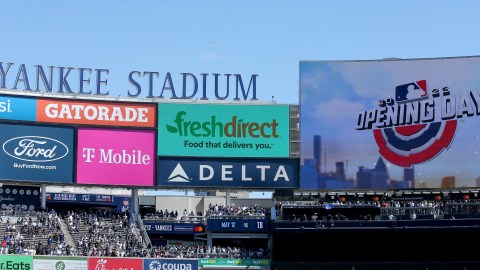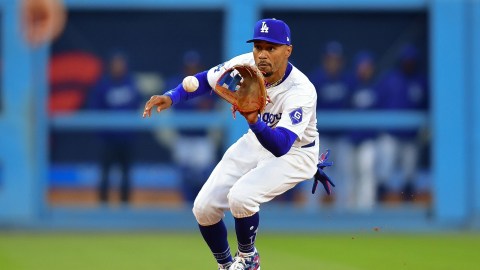 As the Major League Baseball offseason approaches the end of the calendar year, Old Mother Hubbard’s cupboard is getting pretty bare.
As the Major League Baseball offseason approaches the end of the calendar year, Old Mother Hubbard’s cupboard is getting pretty bare.
Actually, that’s not exactly accurate. There are a surprising number of solid second-tier players still on the board — namely Nick Swisher, Cody Ross and Michael Bourn — particularly in the outfield. However, as teams retool for 2013, with Josh Hamilton and Zack Greinke opting for Los Angeles, all of the top-tier options are gone, and the best third-tier-but-serviceable players (guys like Joe Blanton, Francisco Liriano and Jeff Keppinger) have also found homes.
So, all of a sudden, we find players like Chris Perez and Joel Hanrahan suddenly in high demand.
With many teams in the market for some relief help and not a whole lot to choose from on the free agent market beyond Rafael Soriano — who teams don’t want to give up a draft pick to sign, but that’s an entirely different story — attention has turned to the trade winds. Likewise, with the closers of Pittsburgh and Cleveland, respectively, viewed as expendable, it’s not surprising Hanrahan and Perez are so popular.
The Dodgers are one team that’s said to be in the market for bullpen help, but it is a bit odd to see them targeting closers. Given the $22.5 million investment the team made in Brandon League, they clearly don’t need a closer. But if they’re looking for backup that would be an odd, overt show of lack of faith in a guy they just put so much money into.
The Red Sox, too, seem to be searching for some additional arms in the ‘pen. In fact, they’ve definitely checked in on Hanrahan, for whom the Pirates reportedly want Jose Iglesias.
But how good a pickup would Hanrahan be? After establishing himself with Pittsburgh after a midseason trade from Washington in 2009, the 31-year-old has certainly had some brilliant moments, but the peripheral numbers on his 2012 season indicate that he’s a player in decline — and thus might not transfer well to the superior American League.
Since 2009, Hanrahan has put up so-so seasons in 2010 and 2012, and one excellent one in 2011. That uptick in performance also coincided in an uptick in fastball velocity, from 95.9 miles per hour in 2010 to 97.2 mph in 2011. Interestingly enough, he actually sacrificed strikeouts (from 12.9 per nine innings to 8.0) but simultaneously cut his walk rate (from 3.4 to 2.1).
So, it’s not difficult to figure out that Hanrahan’s success is a direct result of his command, and when it’s off he swiftly loses effectiveness. So, looking at Hanrahan’s 2012 numbers in that context should set off some immediate sirens.
Hanrahan’s fastball velocity went back down to about its 2010 level in 2012, and while that wouldn’t necessarily be worrisome, it is a bit more so as his offseason conditioning has been questioned in the past. But either way, Hanrahan wasn’t nearly the pitcher in 2012 as he was the year prior, and the numbers show he was actually lucky to be as effective as he was.
Hanrahan’s walk rate shot up in 2012, from 2.1 per nine innings in 2011 to 5.4 in 2012. And while his strikeout rate also climbed back to 10.1, his park-adjusted ERA, while still above league average, fell almost 70 points. His fly ball rate skyrocketed in 2012 (and home runs with it, allowing eight in 2012 to just one in 2011), jumping all the way from 28.6 percent in 2011 to 45.1 percent last year — always serious red flag for a pitcher.
But perhaps the most telling sign is that Hanrahan’s numbers declined while he got extremely lucky on balls in play, allowing just a .225 average on balls put into play — suggesting that Hanrahan’s decline is only likely to accelerate. For those not versed in Sabermetrics, a pitcher’s opponents’ batting average on balls in play (discounting walks, strikeouts and home runs) will always trend back to .300. Anything above or below that figure is a random variance out of the pitcher’s control.
So, with a fastball that still ranges easily in the mid-90s, Hanrahan may yet have something to offer interested teams. However, the numbers show several red flags which should be troubling to those parties.
Considering he figures to make about $7 million in arbitration, Hanrahan is a dangerous option that teams may want to avoid for that price.



